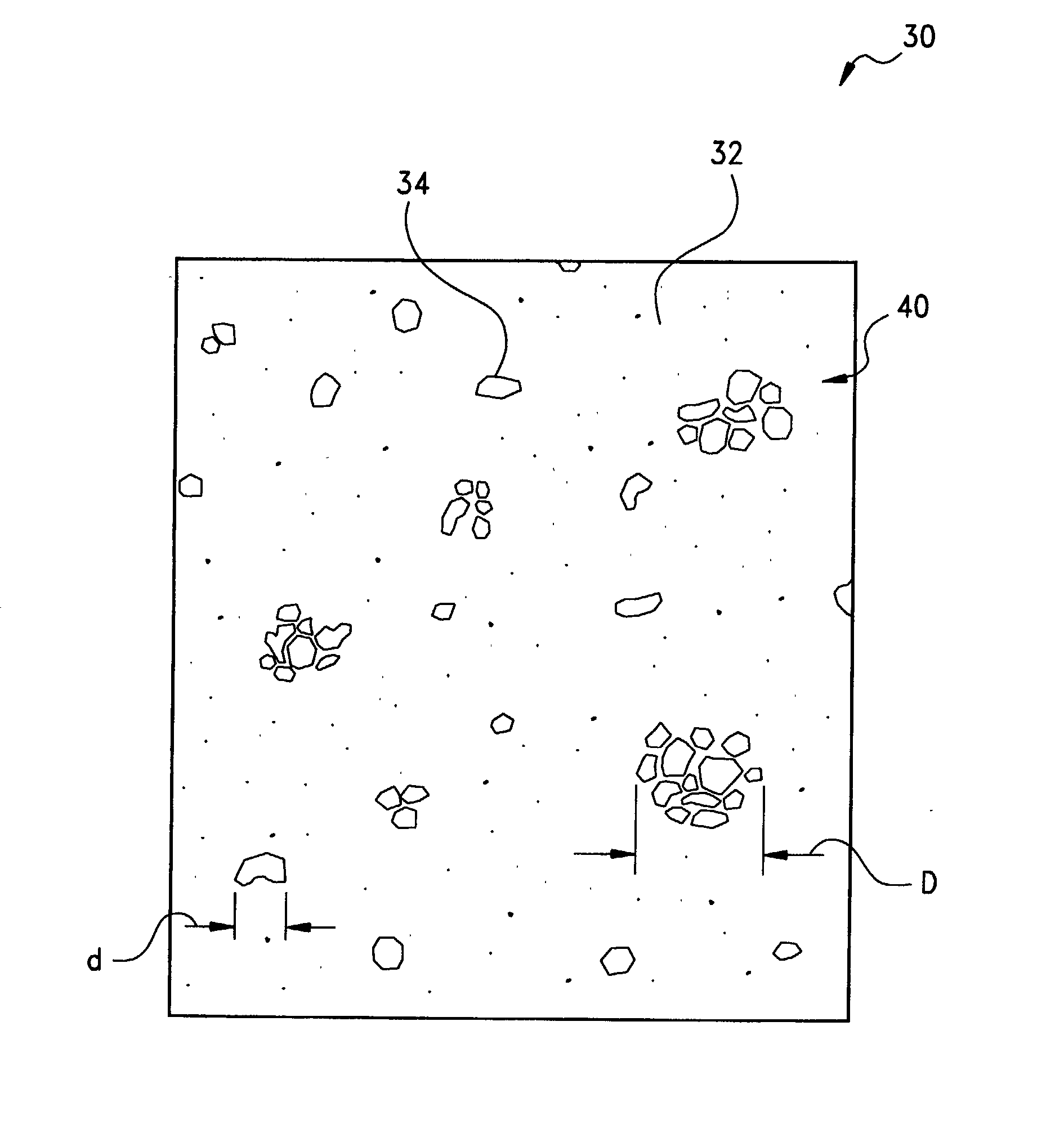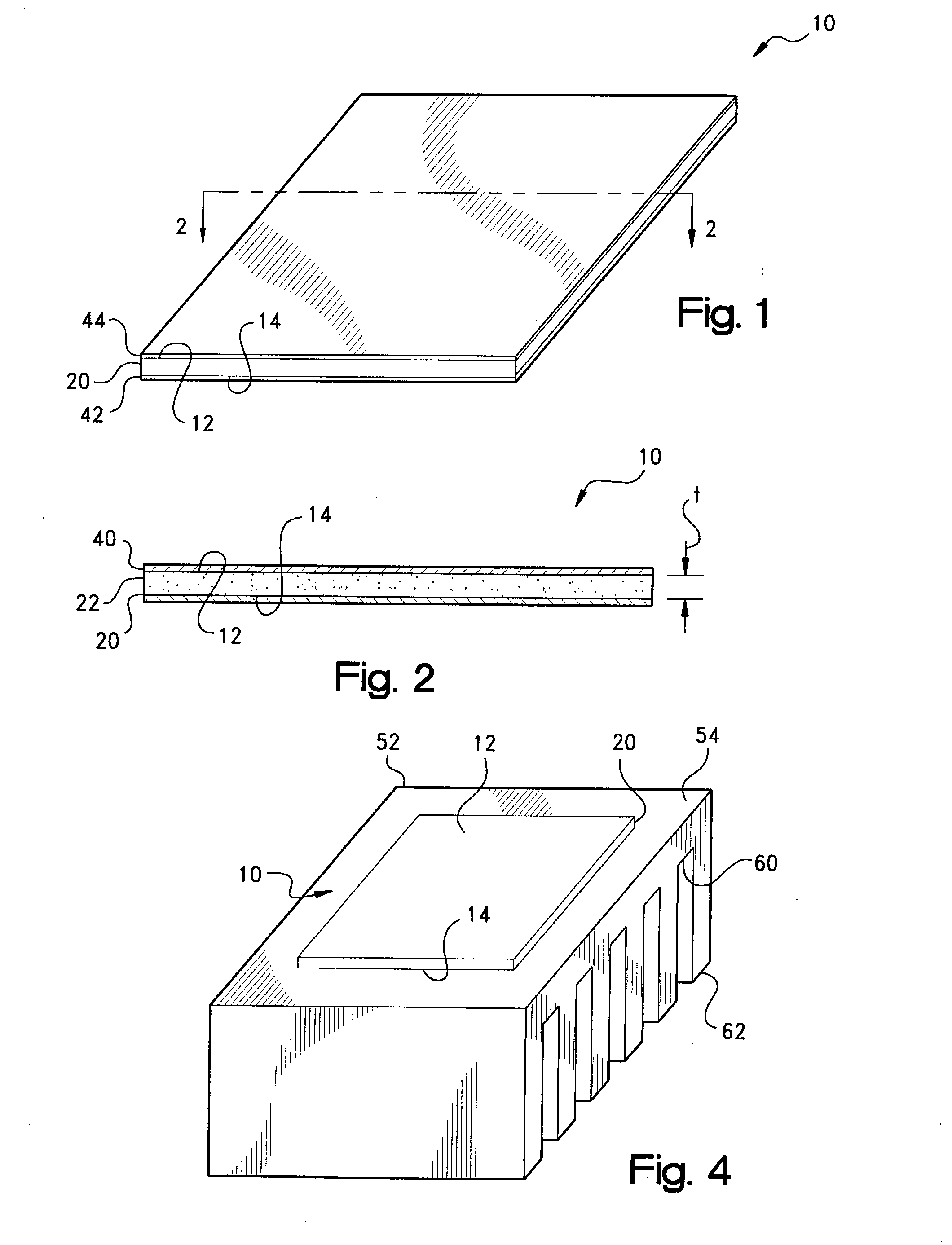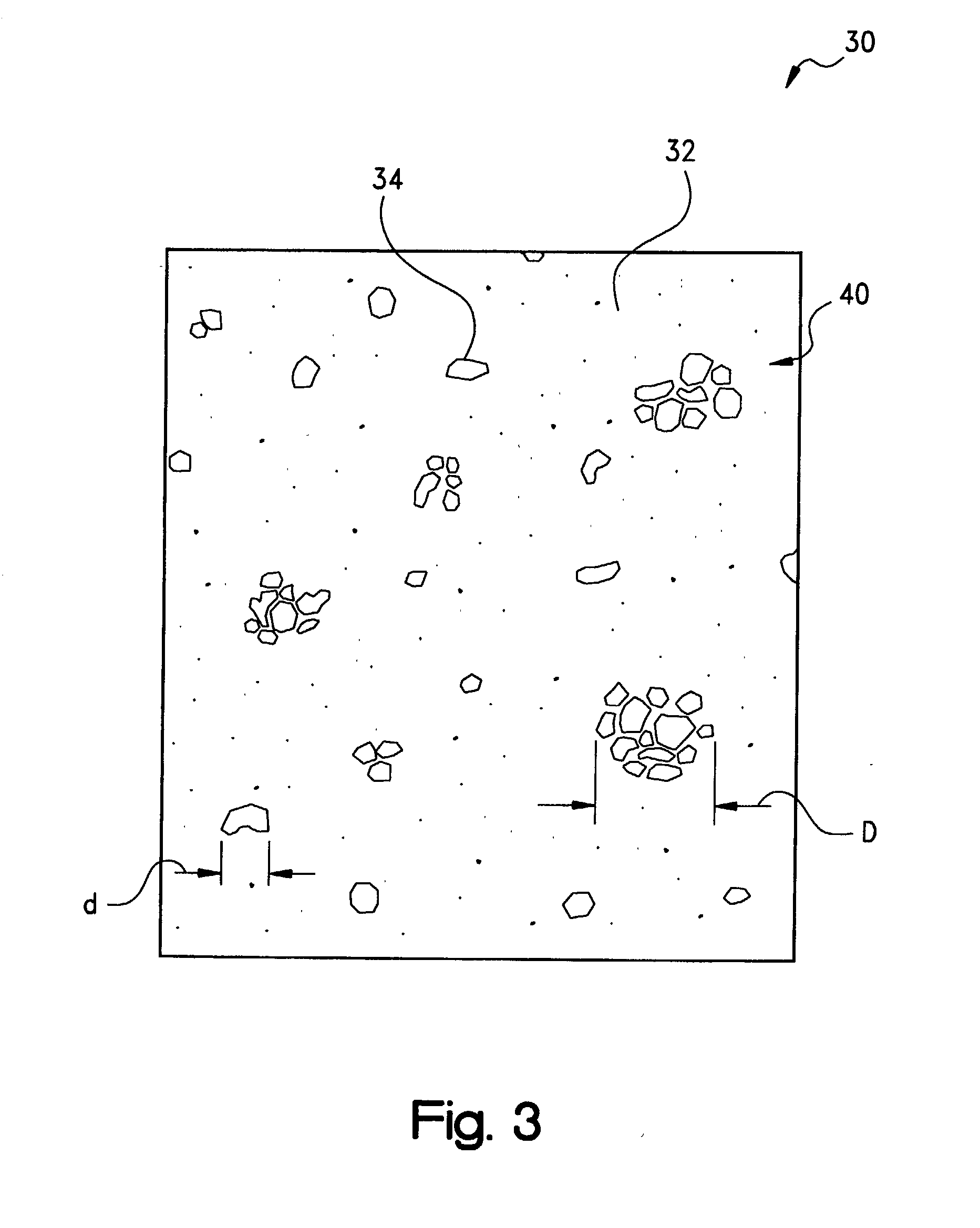Thermal management materials having a phase change dispersion
a technology of phase change dispersion and management materials, which is applied in the direction of light beam reproducing, instruments, and semiconductor/solid-state device details, etc., can solve the problems of increasing design complexity, increasing device size, and increasing the complexity of circuit designs of modern electronic devices, and achieves low thermal impedance
- Summary
- Abstract
- Description
- Claims
- Application Information
AI Technical Summary
Benefits of technology
Problems solved by technology
Method used
Image
Examples
example 1
[0066] In a first representative formulation, about 70% by total weight of a fusible metal ASTM Alloy 117 was dispersed in a boron nitride (BN)-filled PCM compound (30% BN in a polymeric binder, Thermflow.RTM. T454, Chomerics Division, Parker Hannifin Corp., Woburn, Mass.) by admixing the two components which were heated to a temperature of about 60-70.degree. C. In the blend so formed, the alloy was observed to form a dispersed phase of discrete domains and agglomerations thereof within a continuous matrix phase of the BN-filled PCM.
[0067] The Thermflow.RTM. T454 PCM compound itself was reported as having a phase change temperature of about 43.degree. C., a thermal impedance of about 0.025.degree. C.-in.sup.2 / W (0.63.degree. C.-cm.sup.2 / W) at about 90 psi (620 kPa), and an apparent thermal conductivity of about 0.7 W / m-K.
[0068] As to the alloy, such 117 alloys are specified per ASTM B774 as eutectics having a melting point of 117.degree. F. (47.degree. C.) and comprising between 44...
example 2
[0073] In a second representative formulation, the BN-filled Thermflow.RTM. T454 PCM compound was admixed with about 70% by total weight of another fusible metal alloy (METSPEC.TM. 141 ("MS 141"), MCP Metalspecialties, Fairfield, Conn.). The lead and cadmium-free alloy used in this Example 2 was a eutectic of 32.5% bismuth, 16.5% tin, and 50% indium, and had a melting point of 141.degree. F. (61.degree. C.). This alloy was reported as having a an apparent thermal conductivity of about 20 W / m-K.
[0074] As in Example 1, the PCM compound-fusible metal alloy admixture of this Example 2 was formed by coating into a 5 mil (125 .mu.m)-thick sheet for thermal characterization. Thermal impedance again was determined according to ASTM D5470 at an applied pressure of about 90 psi (620 kPa) and a minimum bondline thickness (MBLT) of about 1 mil (25 .mu.m). The results are summarized in Table 2 below as compared to reported values for the Thermflow.RTM. T454 material itself and for a standard sil...
PUM
| Property | Measurement | Unit |
|---|---|---|
| domain transition temperature | aaaaa | aaaaa |
| domain transition temperature | aaaaa | aaaaa |
| matrix transition temperature | aaaaa | aaaaa |
Abstract
Description
Claims
Application Information
 Login to View More
Login to View More - R&D
- Intellectual Property
- Life Sciences
- Materials
- Tech Scout
- Unparalleled Data Quality
- Higher Quality Content
- 60% Fewer Hallucinations
Browse by: Latest US Patents, China's latest patents, Technical Efficacy Thesaurus, Application Domain, Technology Topic, Popular Technical Reports.
© 2025 PatSnap. All rights reserved.Legal|Privacy policy|Modern Slavery Act Transparency Statement|Sitemap|About US| Contact US: help@patsnap.com



